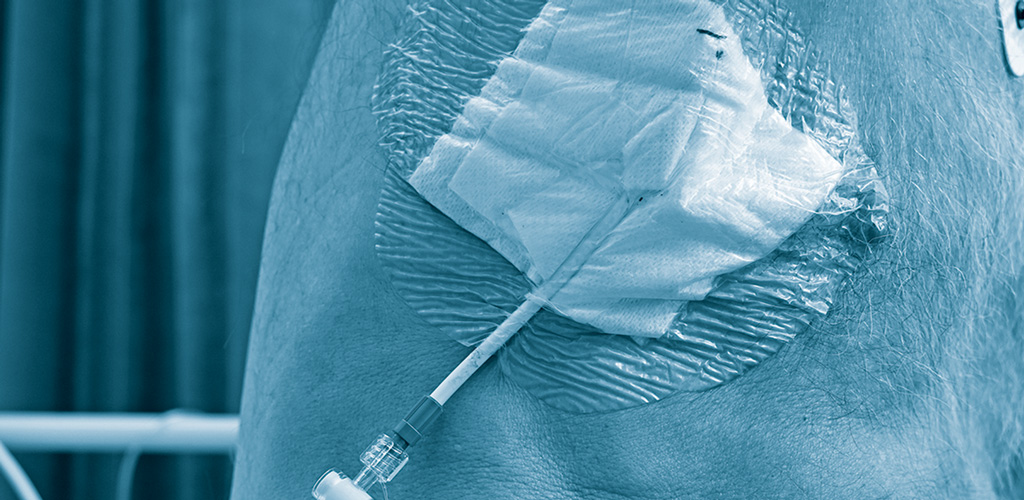Chest tubes: What you need to know

This information will help you understand your chest tube care in hospital and at home.
What is a chest tube?
A chest tube is a tube that is put in through the chest wall, between the ribs. This tube is used to drain air, fluid or both from around your lungs.
How does a chest tube work?
The tube is connected to a drainage container and may be connected to suction to help drain the air or fluid.
Your drainage container should always stay below chest height. The tubing should not be bent or twisted.
What will happen when the chest tube is in?
You will have the chest tube in for a few days until all or most of the air or fluid has been drained.
You will need to have a chest X-ray each day to make sure the tube works. This will help your doctors know when to take the chest tube out.
What can I do with a chest tube?
You should walk around your hospital room, bathroom and in the hallway unless you are told not to. Your doctor will decide when you can have your drainage container taken off suction.
You should take 3-5 deep breaths every hour when awake.
You should hold a pillow to your chest if you have pain when you breathe deeply or when you cough.
When to call your nurse or doctor in the hospital
- If you have shortness of breath or trouble breathing
- If you have more pain
- If your dressing starts to lift, is loose, dirty or wet
- If your tube comes out or disconnects
- If you have any other concerns
What will happen when they take out my chest tube?
You may have some discomfort when it is taken out.
There are no restrictions with activity in hospital once your chest tube is removed, unless instructed otherwise by your team.
A bandage will be placed over the chest tube site after the tube is taken out. The wound area may need to be closed with a stitch.
You will have another chest X-ray
a few hours after removal of the tube.
Wound care and stitches
Do not take the bandage/dressing off or get it wet for three days after the chest tube is taken off.
You can take off the bandage/dressing after three days and put on another one each day until the wound heals.
If there is a stitch at the chest tube site, please call your family doctor or go to a walk-in clinic to have it taken out five to seven days after your chest tube was taken out.
You will get a suture removal kit. Please bring this to your family doctor or walk in clinic.
Bathing and showering
After three days, you can shower each day.
Do not take baths or go in a hot tub because this can cause infection. The area should be kept clean and dry.
If you shower with the dressing, it should be changed after. Do not put lotion on the area until it is fully healed.
After discharge
You will have a follow-up appointment with the trauma surgeon four to six weeks after going home in the Trauma Recovery Clinic.
You will have a chest X-ray on the day of your appointment. It is important you attend your follow-up.
Return to the Emergency Department if:
- You have more
- You have shortness of breath or difficulty
- You have chest
- You have fever over 4º F or 38.0ºC
- You have redness or swelling around the
- You have any new symptoms that you are worried
Additional precautions
Do not travel by air until you have been medically cleared by your trauma surgeon.
Do not do any activities that involve changes in environmental pressure, like scuba diving, until cleared by your trauma surgeon.





